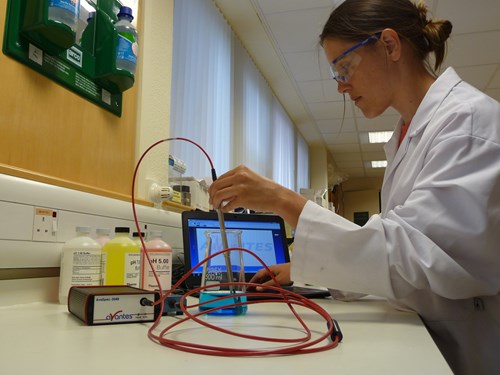Groundwater protection
Advancing groundwater monitoring strategies
State of the art
For onshore CO2 storage, protection of groundwater in shallow aquifers that may be used as a drinking water source is critical. Although CO2 is stored in geological strata at much greater depths than those from which drinking water is extracted, monitoring shallow groundwater quality onshore is essential to ensure that it has not been adversely affected. Previous research has identified monitoring of shallow aquifers for geochemical impacts as a high priority. Commercially available tools are already on the market to monitor groundwater but there remains scope for improvement through increased sensitivity of tools, cheaper techniques and validation of new tools for monitoring drinkable groundwater.

Lab testing of an optic fibre tool being developed to monitor for signs of CO2 intrusion in groundwater
Progress beyond the state of the art
The aim of ENOS is to demonstrate the efficacy of and to advance techniques and technologies suitable for use in aquifers from which drinking water is being or could be abstracted. Through ENOS, monitoring tools and techniques that use geochemical and geophysical indicators of groundwater quality will be demonstrated, building on previous groundwater modelling and monitoring work
The work carried out through ENOS will move beyond the current state of the art as the tests at the GeoEnergy Test Bed and Sulcis Fault Lab will examine greater depths than previous groundwater assessments relating to the potential impacts of unwanted CO2 migration. Effective monitoring deployment strategies will be developed to test whether CO2 storage is affecting shallow aquifers, determine the most sensitive parameters, improve sensitivity of tools and develop low-cost solutions for long-term deployment.
Outcomes
- Tool-box to assess the geochemical reactivity of CO2 in shallow groundwater and definition of key parameters to monitor for early detection of leakage.
- Five monitoring tools demonstrated in the field with improved operational capabilities at optimised cost ready for use at large-scale storage sites. These tools will be included in the ENOS integrated onshore monitoring solution.



